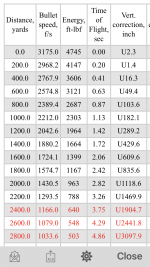Good evening hide,
I've been struggling trying to find a good load with the 120gr seneca bullets from PVA. I heard that solids are a different kind animal and like a lot of jump to the lands. My problem is seating the boat tail in the case deeper. How deep is too deep? I have always tried keeping the bearing surface above the neck/shoulder junction to avoid donuts, and not impede on case capacity, but these bullets are long! If anyone has any ideas I would appreciate it!
I've been struggling trying to find a good load with the 120gr seneca bullets from PVA. I heard that solids are a different kind animal and like a lot of jump to the lands. My problem is seating the boat tail in the case deeper. How deep is too deep? I have always tried keeping the bearing surface above the neck/shoulder junction to avoid donuts, and not impede on case capacity, but these bullets are long! If anyone has any ideas I would appreciate it!


